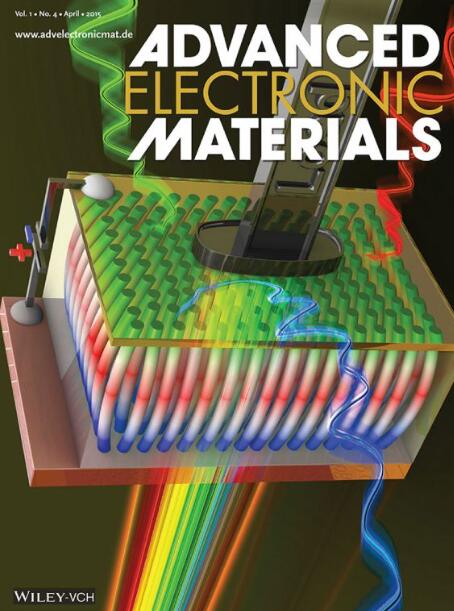自旋电子mem晶体管漏集成与脉冲神经网络发射神经元
IF 5.3
2区 材料科学
Q2 MATERIALS SCIENCE, MULTIDISCIPLINARY
引用次数: 0
摘要
基于 DWss 和 skyrmions 的自旋电子器件在高能效数据存储和超越 CMOS 计算架构的应用中显示出巨大的潜力。在铁磁多层自旋电子器件的基础上,展示了一种具有记忆晶体管特性的磁场门控和电流控制自旋电子漏电积分点火(LIF)神经元。忆晶体管特性允许通过外部磁场和电流脉冲调谐点火特性。根据测量到的特性开发了一个 LIF 神经元模型,以便将该器件集成到系统级尖峰神经网络 (SNN) 中。通过在畴壁磁隧道结器件中进行微磁模拟,证实了神经元器件的可扩展性。当集成到 SNN 和卷积 SNN 框架中时,该器件的分类精度达到 96% 以上。这项研究强调了该器件在基于硬件 SNN 架构的神经形态计算应用中作为神经元的潜力,将器件的忆晶体管特性与高模式分类精度相结合。研究结果表明,开发高能效、可扩展的神经网络是一条大有可为的道路。本文章由计算机程序翻译,如有差异,请以英文原文为准。

Spintronic Memtransistor Leaky Integrate and Fire Neuron for Spiking Neural Networks
Spintronic devices based on DWss and skyrmions have shown significant potential for applications in energy-efficient data storage and beyond CMOS computing architectures. Based on the ferromagnetic multilayer spintronic devices, a magnetic field-gated and current-controlled spintronic Leaky Integrate-and-Fire (LIF) neuron with memtransistor properties is showcased. The memtransistor property allows for tuning firing characteristics through external magnetic fields and current pulses. A LIF neuron model is developed based on measured characteristics to integrate the device into system-level Spiking Neural Networks (SNNs). The scalability of the neuron device is confirmed with the micromagnetic simulations in a domain-wall magnetic tunnel junction device. When integrated into SNN and convolutional SNN frameworks, the device achieves classification precision above 96%. The study highlights the device's potential as a neuron in hardware SNN architecture-based neuromorphic computing applications, combining memtransistor properties of the device and high pattern classification accuracy. The results demonstrate a promising path toward developing energy-efficient and scalable neural networks.
求助全文
通过发布文献求助,成功后即可免费获取论文全文。
去求助
来源期刊

Advanced Electronic Materials
NANOSCIENCE & NANOTECHNOLOGYMATERIALS SCIE-MATERIALS SCIENCE, MULTIDISCIPLINARY
CiteScore
11.00
自引率
3.20%
发文量
433
期刊介绍:
Advanced Electronic Materials is an interdisciplinary forum for peer-reviewed, high-quality, high-impact research in the fields of materials science, physics, and engineering of electronic and magnetic materials. It includes research on physics and physical properties of electronic and magnetic materials, spintronics, electronics, device physics and engineering, micro- and nano-electromechanical systems, and organic electronics, in addition to fundamental research.
 求助内容:
求助内容: 应助结果提醒方式:
应助结果提醒方式:


